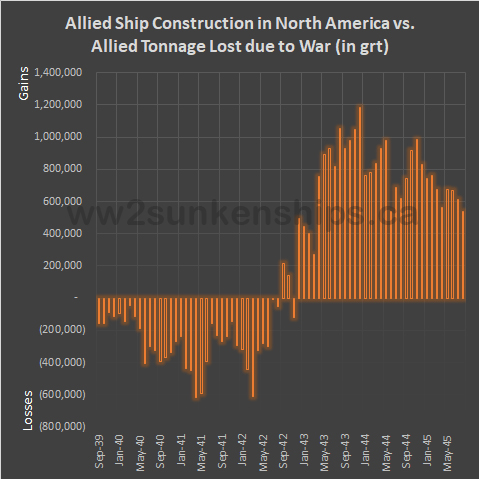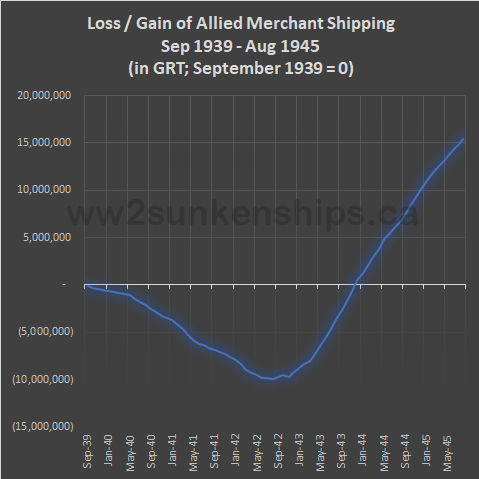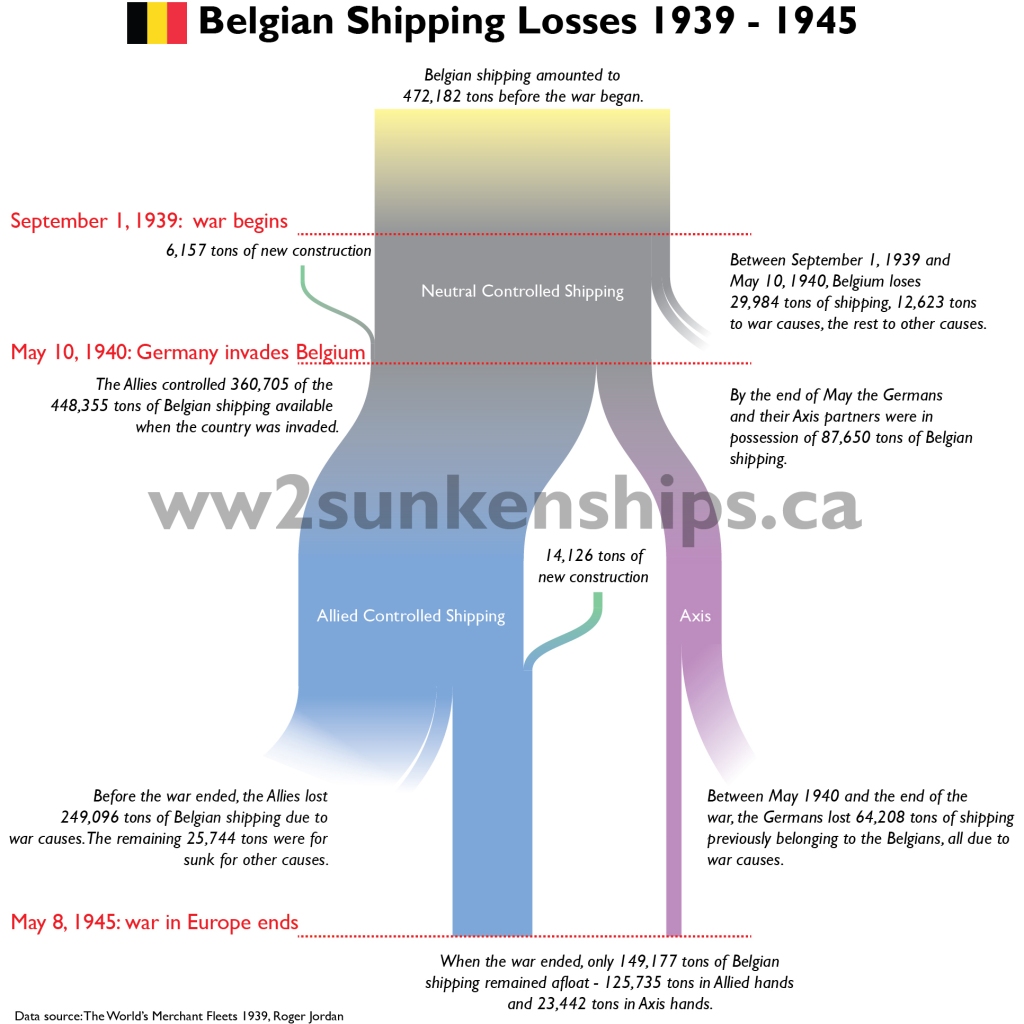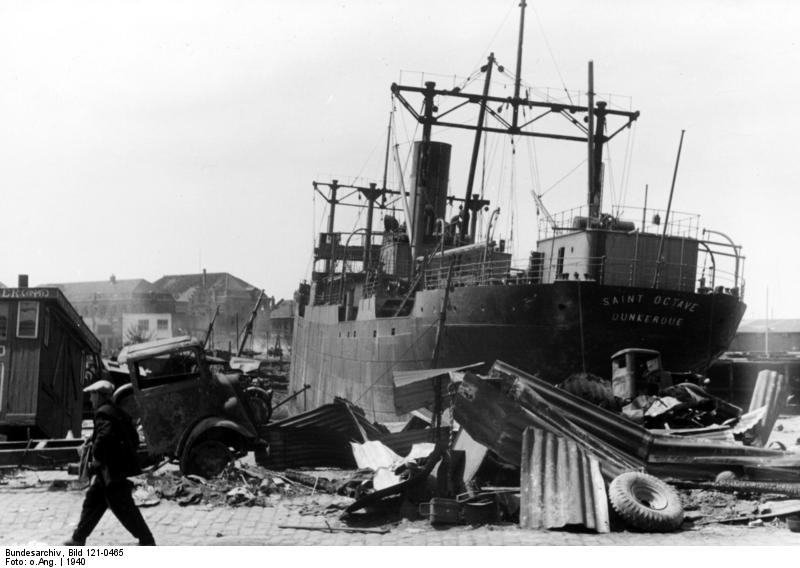It’s debtable whether or not the Germans ever came close to winning the tonnage war in World War II. I personally don’t think so but more numbers would need to be collected including the construction records of Allied shipyards not in North America as well as a determination of how much shpping tonnage Britain would have needed to stay alive. However, after collecting the merchant shipping tonnage built by Canada and the United States during the Second World War and comparing that to what I have for Allied merchant shipping losses, it doesn’t seem likely. These 2 countries alone accounted for 37.7 million gross registered tons of shipping. What this number does not account for is the amount of shipping that became available to the Allies when the United States entered the war as well as any of the new construction that happened outside of North America. That, obviously, requires a bit more work to include.

In the meantime, the first chart above compares the cumulative gains (new construction) and losses for the Allies for each month of the war. The two North American countries began to build ships faster than they could be sunk in Spetember, 1942 when 713,204 tons of new merchant shipping was delivered while 500,881 tons was lost due to war. With one exception, in every month from then on until the end of the war, Canada and the United States (the latter accounting for 93% of total war time production) easily replaced Allied losses. The German submarine arm’s Black May in which 41 of its boats were lost had yet to happen and was just the final nail in the coffin for the Germans.
Even so, it wasn’t until December 1943 that all Allied shipping losses since the beginning of the war were replaced with new construction (below).









